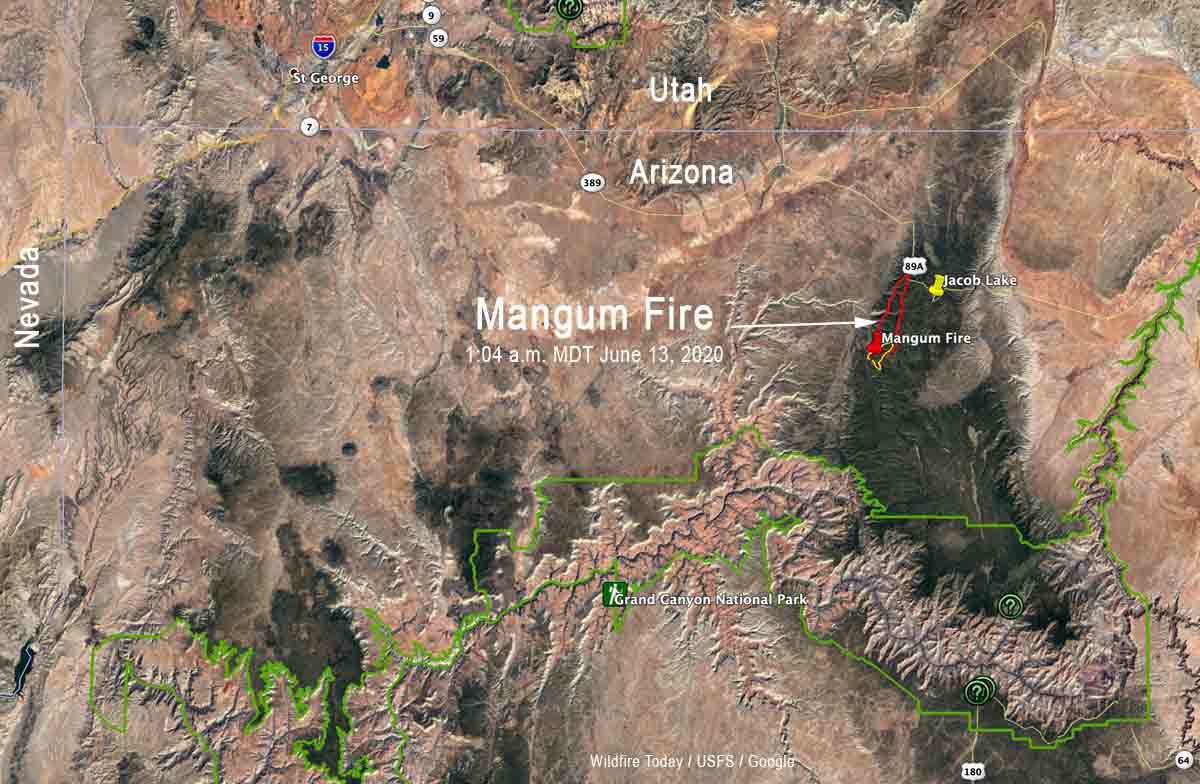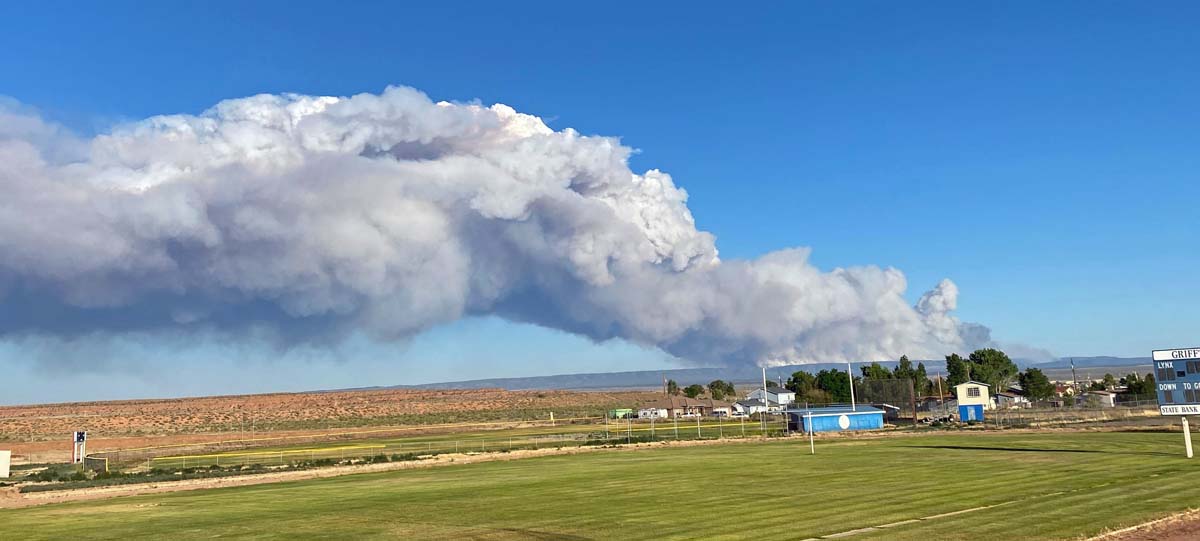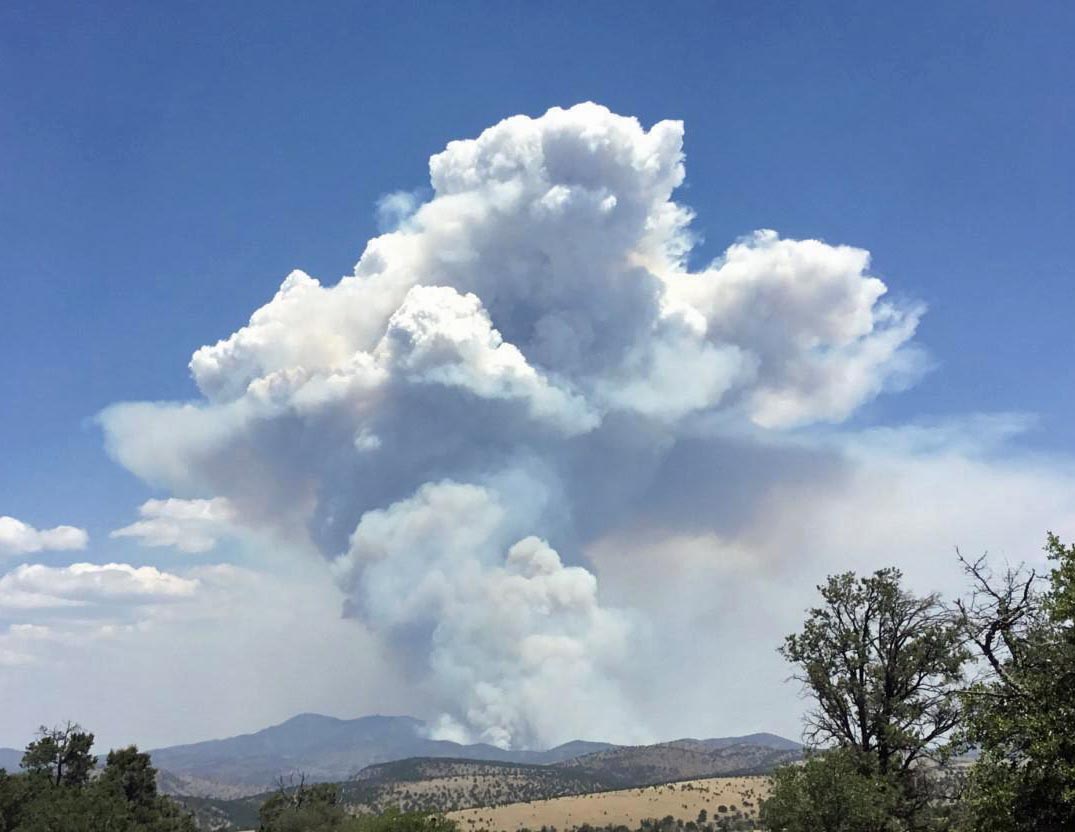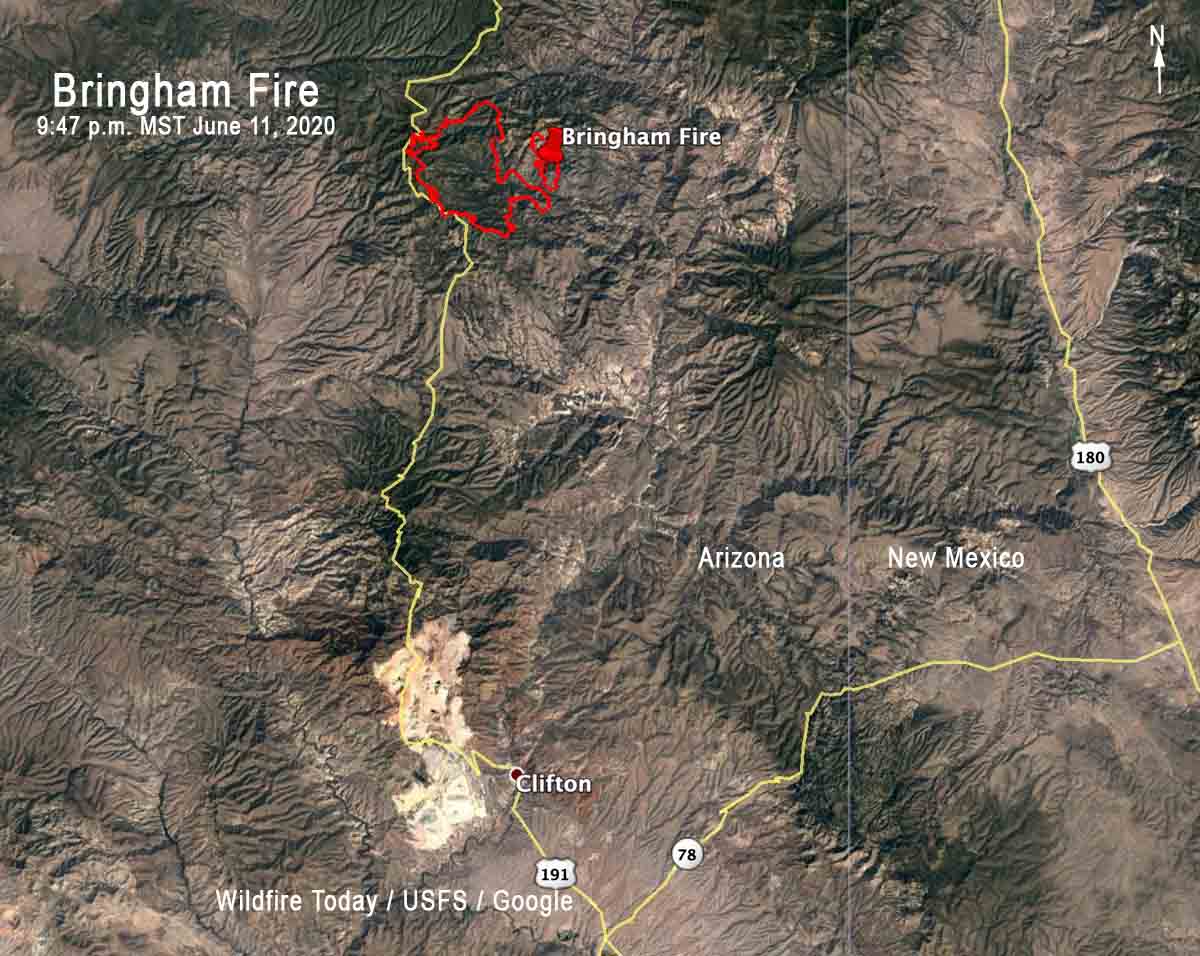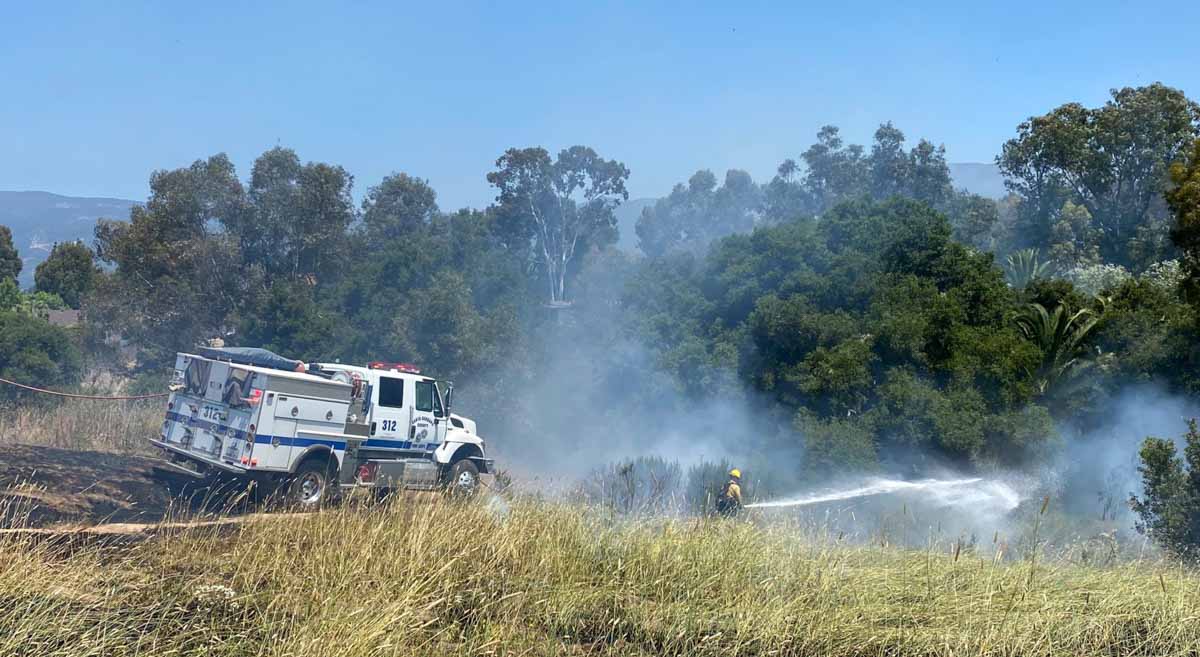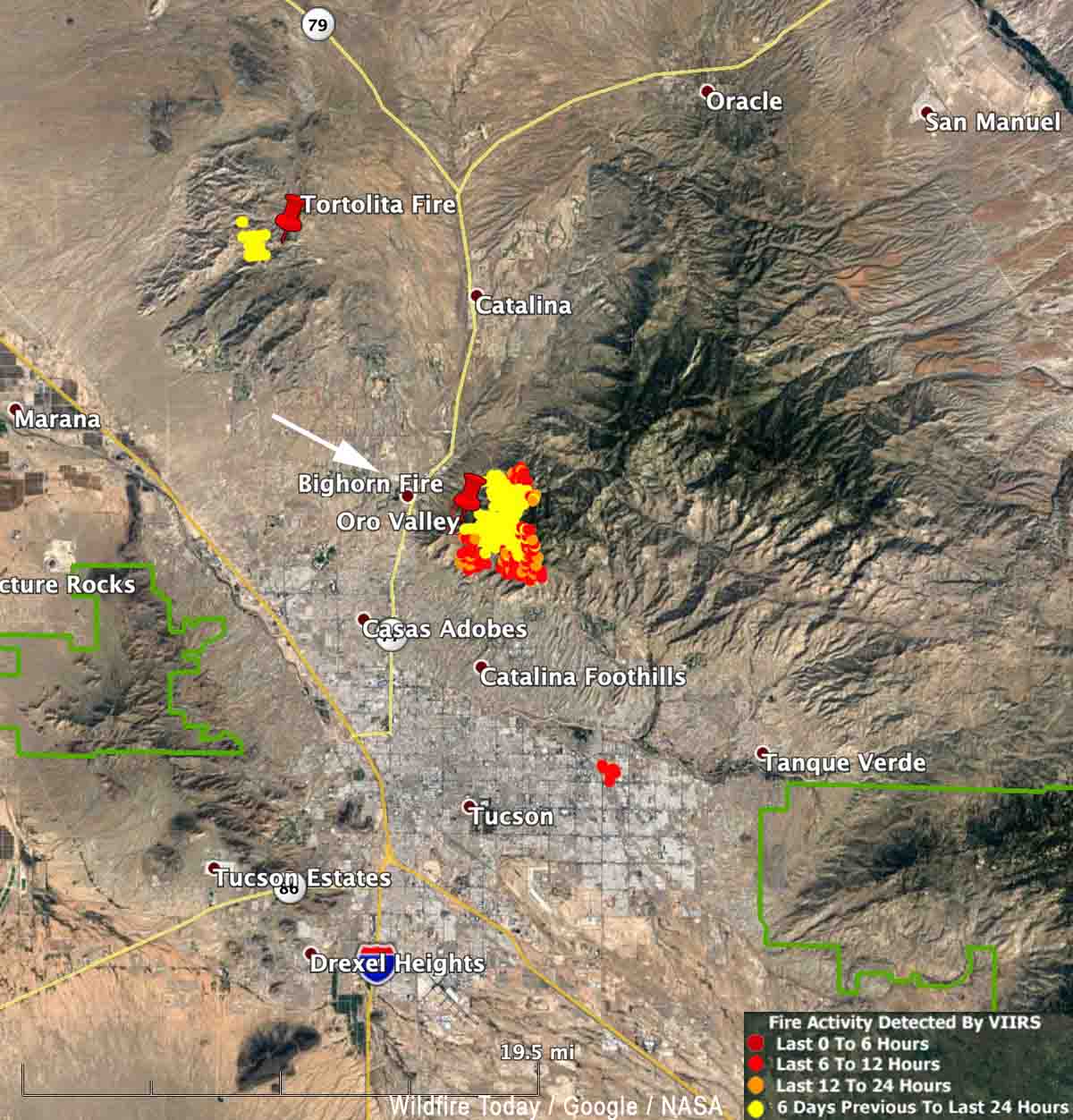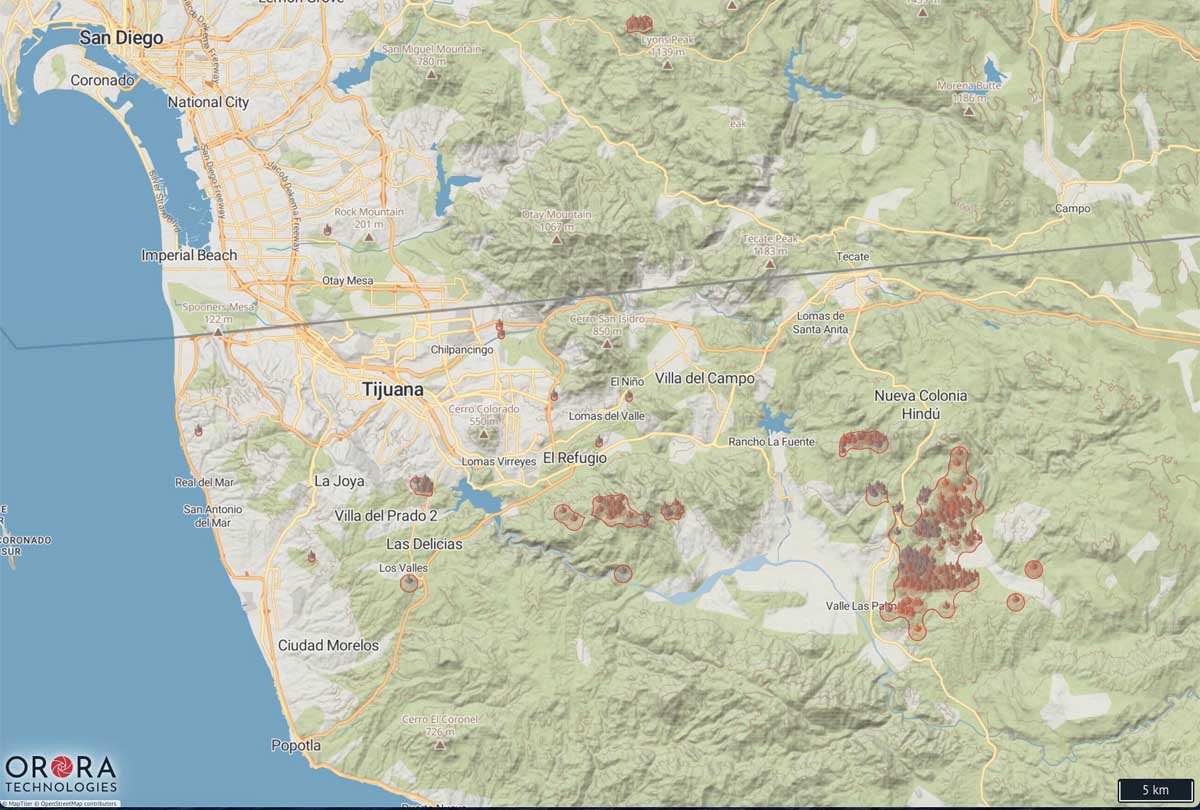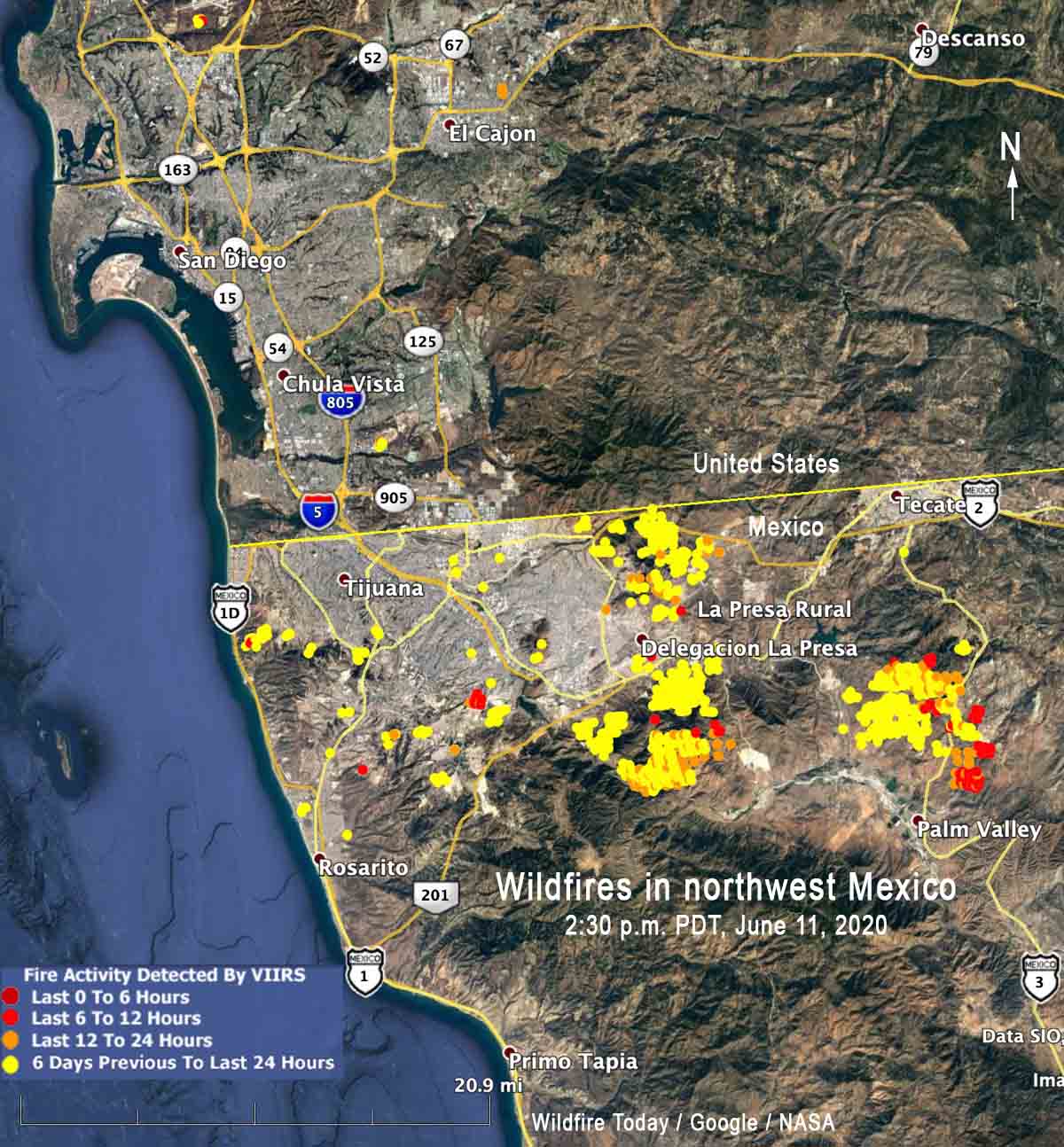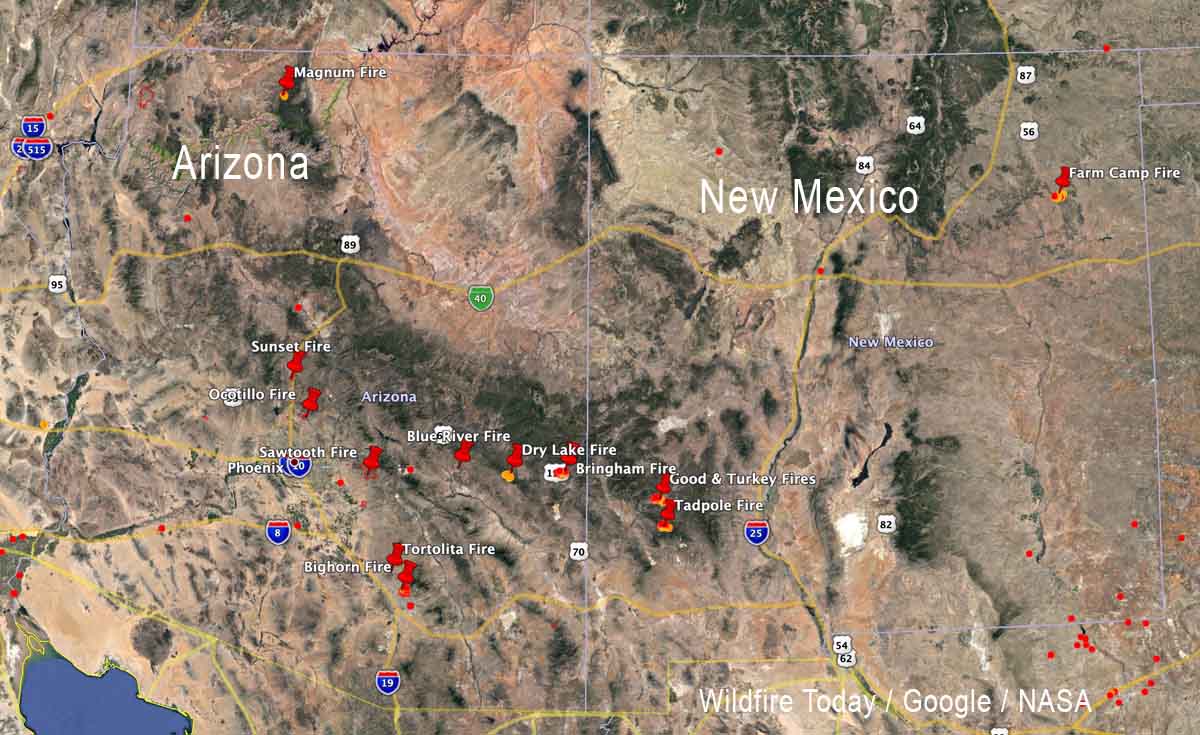(UPDATED at 7:35 a.m. MDT June 14, 2020)
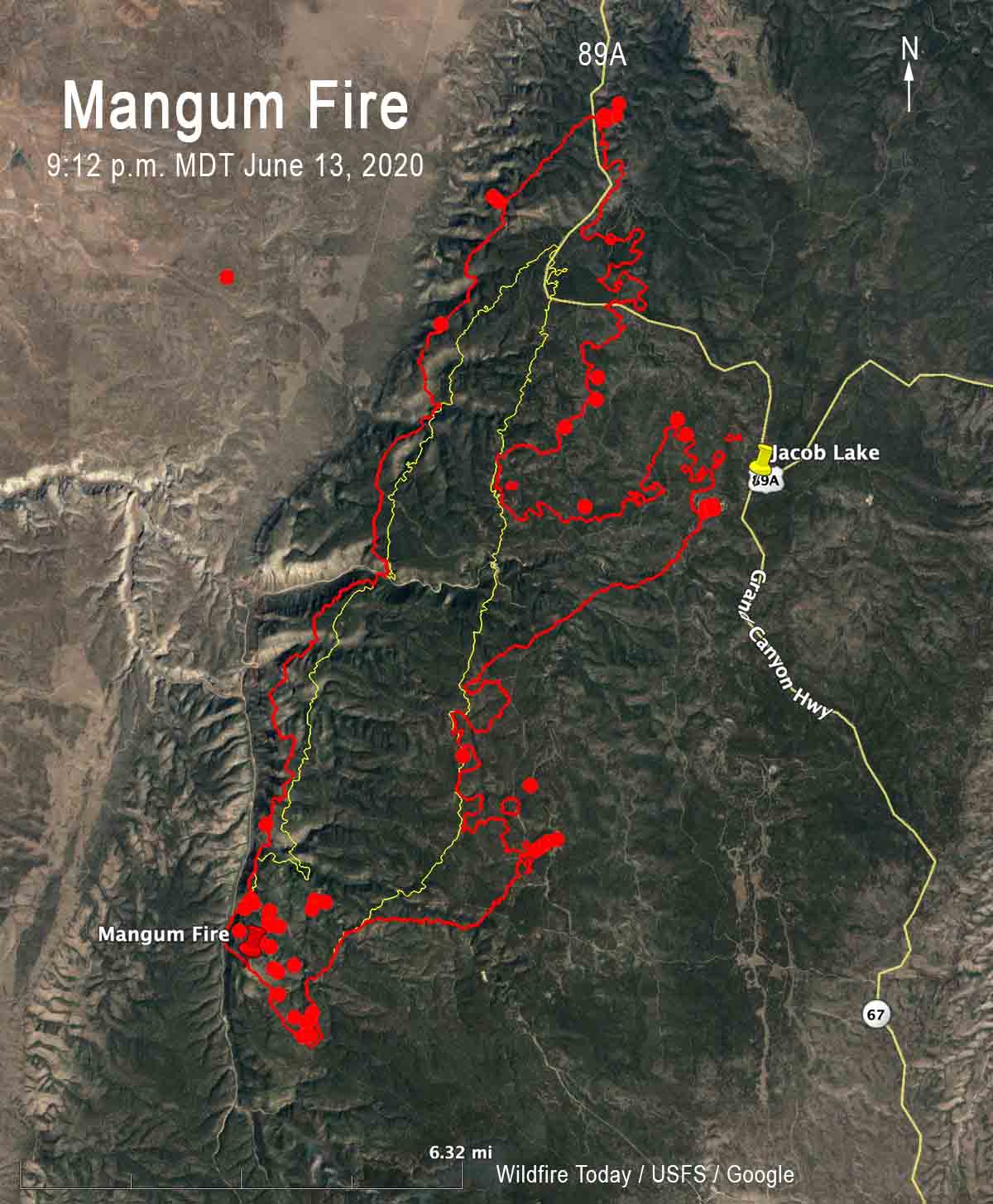
On Saturday the Mangum Fire burned very close to the small community of Jacob Lake, Arizona. During a 9:12 p.m. MDT mapping flight the fire was detected just west of the town very close to a campground and a U.S. Forest Service work center on Road 461. At that time it was less than a half mile from other facilities near the intersection of highways 89A and 67, an area with more campgrounds, an inn, and a Forest Service visitor center.
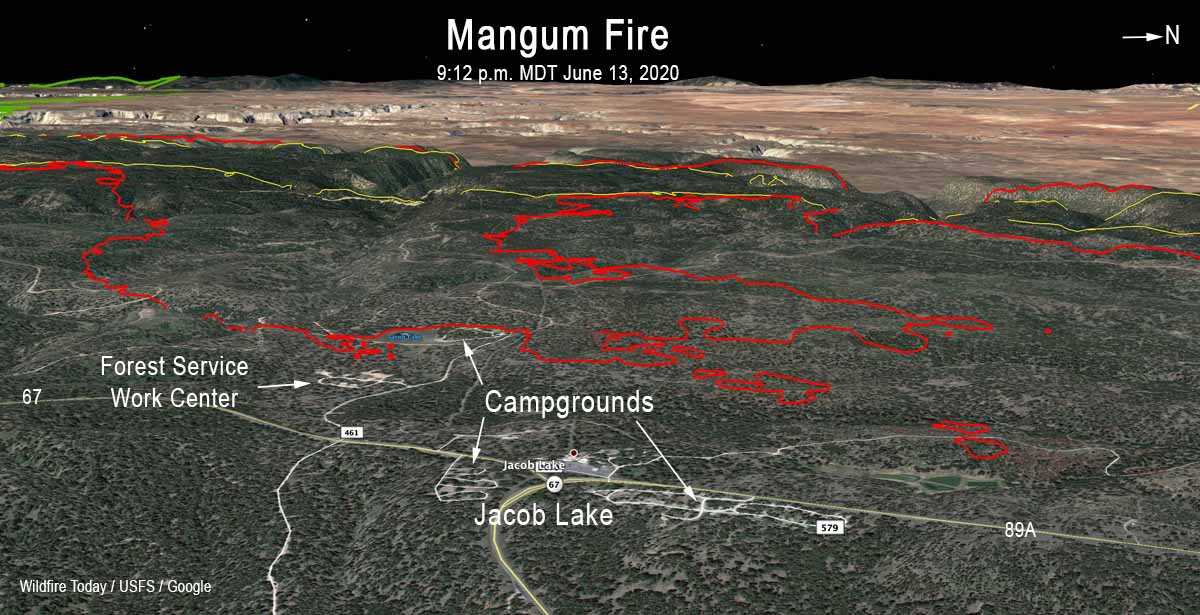
By 10 p.m. the GOES-17 satellite orbiting 22,200 miles above the Earth could no longer detect a large area of intense heat as seen in the photo below taken at 6:56 p.m. MDT Saturday. The temperature at a nearby weather station dropped to 42 degrees at 4 a.m. Sunday and overnight the wind was nearly calm after midnight. But the humidity remained low, rising from a low Saturday afternoon of 9 percent, to 29 percent by 6:47 a.m. Sunday. The fire is at high elevation, 7,000 to 8,000 feet.
The National Weather Service in Flagstaff has issued a Red Flag
Warning for the fire area Sunday due to strong winds and low relative humidity, in effect from noon to 7 p.m. MST Sunday evening. The forecast calls for a high of 79 degrees, RH of 9 percent, and 10 to 18 mph winds out of the southwest gusting at 24 to 28 mph. Similar conditions are expected for Monday. These conditions could continue to threaten Jacob Lake, which is under an evacuation order.
A Fire Weather Watch has also been issued for Tuesday due to strong winds and low relative humidity.
(UPDATED at 7:21 p.m. MDT June 13, 2020)
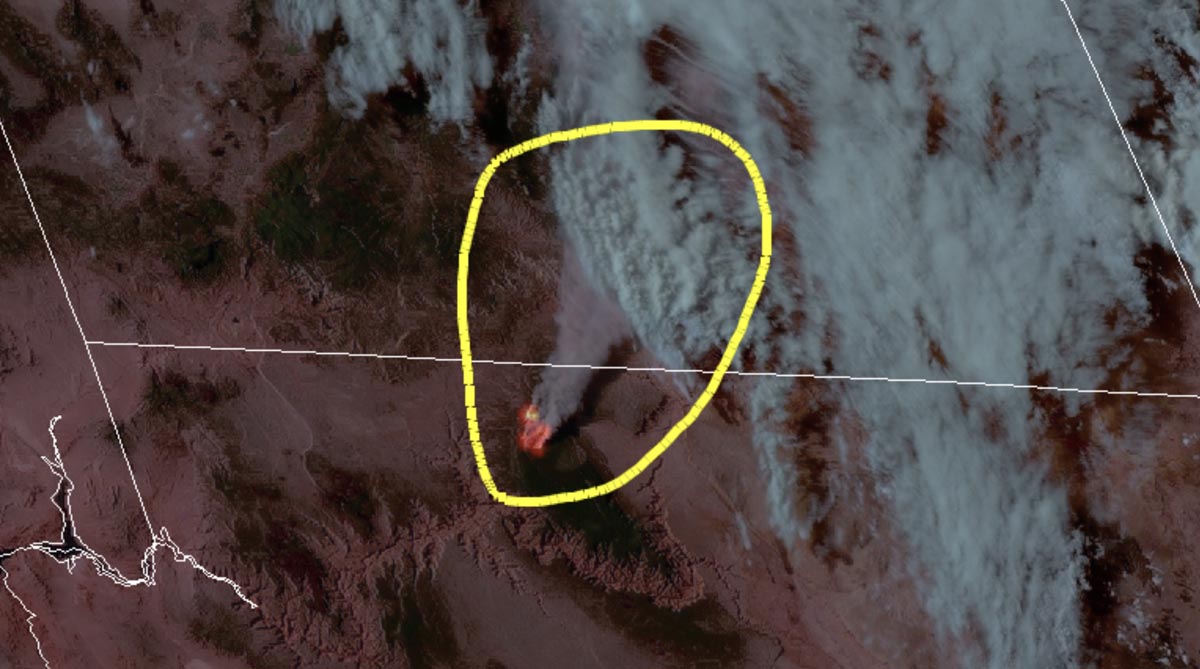
(Originally published at 4:46 p.m. MDT June 13, 2020)

Pushed by winds gusting up to 30 miles an hour, the Mangum Fire ran for an additional 8 miles to the north-northeast Friday. Creating spot fires up to one half mile ahead, it breached control lines and crossed highway 89A four miles northwest of Jacob Lake which is under evacuation orders.
For more information about evacuations contact the Coconino County Sheriff’s Office at 928-226-5089.
The fire is 18 miles southeast of Fredonia, Arizona and 12 miles north of the North Rim of the Grand Canyon.

The Mangum Fire more than quadrupled in size Friday, growing from 2,238 to 10,813 acres by 1:04 a.m. MDT June 13 when a fixed wing aircraft mapped the fire.
The area has been under Red Flag Warnings Friday and Saturday for low humidity and strong winds. On Friday the relative humidity dropped to 11 percent and the high temperature was 83 degrees at a weather station at Warm Springs Canyon. At 2:47 p.m. MST Saturday it was 71 degrees and 10 percent RH with the wind out of the south-southwest at 10 mph gusting to 25 mph.
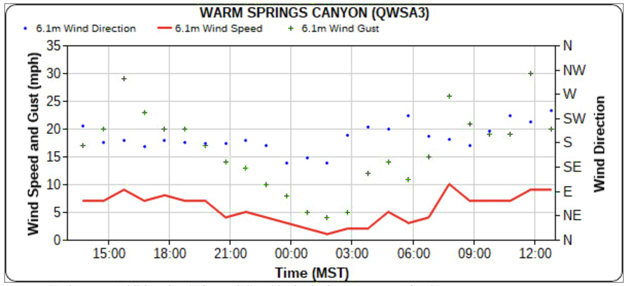
The Mangum Fire is creating a large amount of smoke that is being pushed to the north and northeast, affecting residents in Arizona, Utah, Colorado, Wyoming, and New Mexico.
The structure protection group assigned to the fire will continue working to create additional defensible space around structures and use burnouts intended to divert the blaze around the community. They are aided by a large number of fuel reduction projects around Jacob Lake that have been accomplished during the previous five years.
According to the Incident Management Team, “The fire is being managed utilizing a full suppression strategy, employing tactics that minimize impacts to important values at risk.The safety of firefighters and the public remain our number one priority.”
Saturday morning the Arizona Department of Transportation closed Highway 89A from approximately Marble Canyon to Fredonia and Highway 67 to the Grand Canyon for public safety. The U.S. Forest Service additionally has enacted a closure of the entire fire area.
